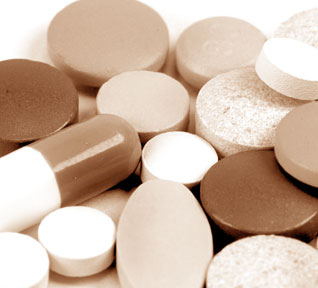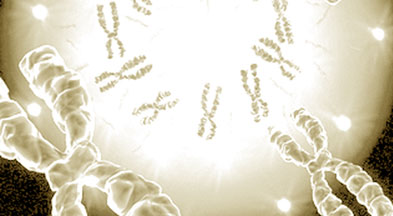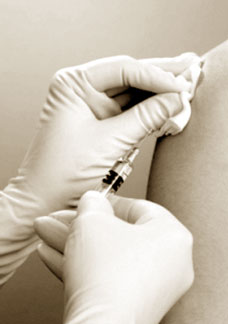|

World Health Day on April 7:
Use antibiotics rationally
By Nilma DOLE
It has become an uncontrolled tendency for patients to misuse
antibiotics instead of heeding a doctor's advice. More often than not,
some even decide for themselves what course of drugs they should take
and what medicines they require to buy over-the-counter. "It has become
a kind of phenomena where patients decide for themselves what
antibiotics to take and what adds to the problem is the fact that
unprofessional pharmacists actually give these patients the drugs
without a prescription," said Prof. Gita Fernando, Professor of
Pharmacology at the Medical Sciences faculty, Sri Jayawardenapura
University. She was speaking at a health seminar at the Health Education
Bureau held in lieu of World Health Day that falls on April 7.
According to her, antimicrobial medicines are drugs used to destroy
or prevent the growth of microbes whereas antibiotics are medicines
which kill bacteria and/or prevent their growth later.
Benefits
"Antibiotics have to be efficient in working to cure a patient, it
needs to be safe for the patient to use with minimum side effects, it
has to be of good quality and has to be cost effective so that the
patient can afford it," she said. Overall, the benefits should outweigh
the risks when it comes to administering antibiotics to a patient.
 |
|
Antibiotics: benefits
should outweigh risks |
"The rational use of antibiotics is selecting an appropriate
antibiotic based in definitive or probable diagnoses pertaining to
bacterial infection. The correct use of dosage should be properly told
to the patient because if they misunderstand the doctor or don't adhere
the doctor's advice, they won't be cured quickly.
"No matter how much we train professionals in pharmacology and
qualified pharmacists, patients still continue to take medication
without adhering doctor's advice because if they don't take the drugs as
prescribed, they will not heal soon. Hence, it should be made compulsory
even by law that unless a patient takes a course of drugs the proper
way, they can't blame it on the doctor and go for a second opinion
immediately," said Prof. Fernando.
The professor said that the 'second opinion syndrome' is rampant
among patients today.
"When someone becomes sick with a common cold or a 'flu, they want a
quick fix so they don't heed their doctor's advice to drink fluids, take
rest and eat well. Instead they go for a second opinion until a doctor
gives some antibiotics to give a 'quick fix' so that they can go back to
work," she said. A patient needs rest and not resting would lead to much
bigger problems which will have bad consequences.
Prof. Fernando said, "It is necessary to use antibiotics only if
there is a bacterial infection such as meningitis, urinary tract
infection or pneumonia but when it comes to a virus infection such as
the common cold or diarrhoea then antibiotics are not required."
More often than not, Prof.Fernando said that she advises patients to
take simple traditional cures when it comes to reducing a viral
infection such as drinking crushed cumin seeds to stop diarrhoea.
Doses
"Administration of a drug depends on optimal doses, frequency, and
selecting the appropriate route. The patient has to continue the
treatment until they are cured and the doctor should check a test for
the cure which would be ideally microbial,"she said. There are several
problems from use of antibiotics and the professor said that 24 percent
of antibiotics are taken which are not intended for the particular
patient and more often than not, old prescriptions are used. "Take
antibiotics that are prescribed, ask your doctor about the drug,
especially about storage and usage. Do not ever use antibiotics of old
prescriptions, old tablets or from another patient's prescription," said
the professor. She said that a patient should avoid self-medication and
report to a doctor about side effects instead of deciding that they
won't use the antibiotics without telling the doctor. "In my years of
experience, no matter how much I tell the patient to be patient in
getting cured, there have been several cases where patients have
demanded antibiotics from me for no reason at all.
My advice would be that you shouldn't do this because it is the
doctor who knows what's best for you."
The most commonly used antibiotics are pencilliin, erythromycin,
ciprofloxcin and gentamicin which are available in pharmacies but
patients should never buy them over-the-counter without heeding doctors
warnings because it might have serious complications. "Talk to a doctor
before taking medicines because every individual is different and
unique. So a certain medication might work for one person but it won't
work for another," she said.
Damaging
What patients don't know is that antibiotics can cause damaging
problems if they are not taken in the proper manner. "Patients who
regularly use antibiotics sometimes won't be cured completely because
certain dangerous microbes in the body can develop resistance to the
drugs," said Prof.Fernando.
"In Sri Lanka, since the health industry is a big field and people
are serious about it, patients should be knowledgeable in knowing what
they put into their bodies.
"Before you buy medicine with a prescription from a doctor, do some
background study or check for information of the drug so that you know
what you're taking.
It is important to get patients the right information because it
would be a matter of life and death," said the Professor.
According to the World Health Organisation's (WHO) theme on 'Use
Antibiotics Rationally' as the theme for World Health day this year,
"Antimicrobial resistance is not a new problem but one that is becoming
more dangerous; urgent and consolidated efforts are needed to avoid
regressing to the pre-antibiotic era.
On World Health Day 2011, WHO will introduce a six-point policy
package to combat the spread of antimicrobial resistance."
Next-generation disease fighters: 'Bacterial Dirigibles'
Scientists have reported development of bacteria that serve as mobile
pharmaceutical factories, both producing disease-fighting substances and
delivering the potentially life-saving cargo to diseased areas of the
body. They reported on this new candidate for treating diseases ranging
from food poisoning to cancer - termed "bacterial dirigibles" - at the
241st National Meeting & Exposition of the American Chemical Society,
being held here.
"We're building a platform that could allow bacterial dirigibles to
be the next-generation disease fighters," said study leader William E.
Bentley, Ph.D. "The concept is unique."
Bentley explained that traditional genetic engineering reprograms
bacteria so that they produce antibiotics, insulin, and other medicines
and materials. The bacteria grow in nutrient solutions in enormous
stainless steel vats in factories. They release antibiotics or insulin
into vats, and technicians harvest the medicine for processing and
eventual use in people.
The bacterial dirigible approach takes bioengineering a step further.
Scientists genetically modify bacteria to produce a medicine or
another disease-fighting substance. Then, however, they give the
bacteria a biochemical delivery address, which is the locale of the
disease. Swallowed or injected into the body, the bacteria travel to the
diseased tissue and start producing substances to fight the disease.
Bentley chose the term "bacterial dirigibles" because the modified
bacteria actually have the fat-cigar look of blimps and zeppelins, those
famous airships of yesteryear. In addition, the bacteria seem to float
like a blimp as they make deliveries.
The prototype bacterial dirigible is a strain of E. coli that Bentley
and colleagues developed at the University of Maryland in College Park,
where he is Robert E. Fischell Distinguished Professor and Chair of the
Fischell Department of Bioengineering.
"We have created a genetic circuit that endows E. coli with
targeting, sensing and switching capabilities," Bentley explained. "The
resultant cell is a bacterial dirigible - a cell that autonomously
navigates and carries or deploys important 'cargo'."
The "targeting" molecule is attached to the outer surface of the
bacteria. It gives the bacteria an ability to "hone in" on specific
cells and attach to them - in this instance, the intestinal cells where
other strains of E. coli cause food poisoning symptoms. Inside the
bacteria is a gene segment that acts as "nanofactory." It uses the
bacteria's natural cellular machinery to make drugs, such as those that
can fight bacterial infections, viruses, and cancer.
The nanofactory also could produce signalling molecules that enable
the dirigible to communicate with natural bacteria at the site of an
infection. Some bacteria engage in a biochemical chit-chat, termed
"quorum sensing," in which they coordinate the activities needed to
establish an infection.
Bacteria dirigibles could produce their own signalling molecules that
disrupt quorum sensing, preventing bacteria from starting an
infection.The nanofactory also could produce chemical signals that
trigger cells lining the stomach or other parts of body to synthesize
natural disease-fighting substances, such as immunoglobulin.
Immunoglobulin are proteins used by the immune system to identify and
destroy foreign objects, such as bacteria and viruses."The bacterial
dirigibles can send out a strong signal to which disease-fighting cells
of the body can respond," Bentley noted. "The chemical signals tell the
cells to attack the body's foreign invaders, including the bacteria that
cause food poisoning."
Bacterial dirigibles could be given to patients in the form of
probiotics, live microorganisms that are beneficial to health like those
found in certain kinds of yogurt, Bentley said. Doctors could also
inject dirigibles into the bloodstream or directly into a diseased area,
such as a tumour, he said.
(Source: Michael Bernstein Michael Woods American Chemical Society)
Are we eating plastic?
Plastics are inseparable from our food. Our food gets processed,
packaged, transported, stored and even cooked and re-heated in plastic,
in case we're using the microwave oven.
With our food always touching plastic, haven't you wondered if the
aftertaste of this convenience could be harmful to our health? Recent
discussions in this space indicate that you do have cause to worry.
Leaching of plastics
The process by which minute bits of plastic get into our food from
containers is called "leaching". Almost any plastic container can be
expected to leach trace amounts of plastics into food - a fact that the
chemical industry acknowledges - though the amount of transfer is
variable.
* Heating food in plastic seems to increase the amount that's
transferred into food.
* Leaching also increases when plastics touch fatty, salty or acidic
foods.
So, if plastic leaching into food is inevitable, how safe is the food
we eat? Well, the little research that's gone into the ill-effects of
plastics leaching into our bodies suggests that two class of chemicals
are clearly guilty of potential health hazards:
Bisphenol A (BPA)
BPA is a common chemical used in hard, lightweight plastics called
polycarbonates.
Effects on health
* BPA is an endocrine disrupter, which means it has the ability to
disrupt the functions of hormones - especially oestrogen (female sex
hormone), which may result in disruption of reproductive development and
function.
* One study showed that people who had high levels of BPA in the
urine had a higher rate of diabetes, heart disease, and liver toxicity.
* Obesity maybe increased as a function of BPA exposure.
* Perinatal exposure to low doses of BPA alters breast development
and increases breast cancer risk.
* Research has found a connection between BPA and interference with
brain cell connections vital to memory, learning and mood.
Gene, lack of B vitamin linked to increased colon cancer risk in
mice
Offering a likely insight into how such cancers develop in humans
researchers report they have identified a gene that increases the risk
for colon cancer in laboratory mice when the animals' diets are
deficient in folate.
 The new study, "Shmt1 Heterozygosity Impairs Folate-Dependent
Thymidylate Synthesis Capacity and Modifies Risk of Apcmin-Mediated
Intestinal Cancer Risk," published in the March issue of the
peer-reviewed journal Cancer Research, provides evidence that a
combination of folate deficiency and reduced expression of the SHMT1
gene, which is required for accurate DNA synthesis, boosts the risk of
colon cancer in a mouse model. The study indicates that the SHMT1 gene
may be a factor in itself, and also demonstrates how dietary folate, a B
vitamin, may interact with an individual's genetic make-up to increase
colon cancer risk. The new study, "Shmt1 Heterozygosity Impairs Folate-Dependent
Thymidylate Synthesis Capacity and Modifies Risk of Apcmin-Mediated
Intestinal Cancer Risk," published in the March issue of the
peer-reviewed journal Cancer Research, provides evidence that a
combination of folate deficiency and reduced expression of the SHMT1
gene, which is required for accurate DNA synthesis, boosts the risk of
colon cancer in a mouse model. The study indicates that the SHMT1 gene
may be a factor in itself, and also demonstrates how dietary folate, a B
vitamin, may interact with an individual's genetic make-up to increase
colon cancer risk.
"Nutrition and genetics work together to contribute to the creation
of cancer cells and, based on the similarity of folate metabolism in
mice and humans, it is likely that this gene is associated with human
colon cancer," said Patrick Stover, professor in the Division of
Nutritional Sciences and the senior author of the paper.Colorectal
cancer is the second leading cause of cancer-related deaths in the
United States, claiming more than 50,000 lives each year.
"Molecular antecedents that promote development of sporadic colon
cancer include DNA damage. Lack of critical nutrients increases rates of
DNA damage. Therefore, lack of folate has the potential to induce this
damage that ultimately results in transforming normal cells to cancer
cells," said Stover. Screening for colorectal cancer is recommended for
all individuals over 50; however, close to 40 percent of the U.S.
population in this age group does not take this precautionary method.
Individuals who choose not to pursue colonoscopies may want to ensure
their diets contain adequate amounts of folate, Stover said. The U.S.
recommended daily allowance for folate is 400 micrograms per day. Foods
that are rich in folate include many fruits and vegetables, grains,
legumes, nuts and seeds.
Source: Cornell University
Scientists find candidate for new TB vaccine
Scientists have discovered a protein secreted by tuberculosis (TB)
bacteria that could be a promising new vaccine candidate, they report
today in Proceedings of the National Academy of Sciences. The protein
could also be used to improve diagnosis of TB.
TB is caused by the bacterium Mycobacterium Tuberculosis (MTB), which
infects the lungs and spreads through the air as a result of coughing.
There are 9 million new cases of TB each year, killing 4,700 people a
day worldwide.
 BCG is the only available vaccine but it is of limited effectiveness
in protecting against TB. BCG derives from the Mycobacterium bovis
bacterium, which infects cattle and is closely related to MTB. BCG is the only available vaccine but it is of limited effectiveness
in protecting against TB. BCG derives from the Mycobacterium bovis
bacterium, which infects cattle and is closely related to MTB.
Vaccines work by stimulating the immune system to retain a memory of
particular molecules from a microbe that will trigger a rapid immune
response if the microbe is encountered later. The best candidates for
vaccines are those that trigger the strongest response from the immune
system.
In the new study, scientists identified a protein, called EspC, that
triggers a stronger immune response in people infected with the TB
bacterium than any other known molecule. This protein is secreted by the
TB bacterium but not by the BCG vaccine. As a result, the BCG vaccine
does not induce an immune response to this protein, so deploying it as a
new TB vaccine would provide additive immunity over and above that
provided by BCG.
The protein could also be useful as a diagnostic tool, because an
immune response to it is seen in TB-infected people, but not in
non-infected people who have had a BCG vaccine. Detecting immune
responses to it would distinguish BCG-vaccinated people from TB-infected
people, which the currently-used tuberculin skin prick test (the Mantoux
test) is unable to do.
The new protein could thus underpin the next-generation of immune
cell-based blood tests for TB infection, known as interferon-gamma
release assays (IGRAs). The researchers believe it could provide
increased diagnostic sensitivity without compromising a test's ability
to discriminate between BCG-vaccination and TB infection.
"Despite most of the world's population having had a BCG vaccination,
there are still 9 million new cases of TB every year," said senior
author Professor Ajit Lalvani, from the National Heart and Lung
Institute at Imperial College London. "So we urgently need to develop a
more effective vaccine for TB.
"We've shown that EspC, which is secreted by the bacterium, provokes
a very strong immune response, and is also highly specific to MTB. This
makes it an extremely promising candidate for a new TB vaccine that
could stimulate broader and stronger immunity than BCG. Surprisingly,
our results also show that this molecule could underpin next-generation
diagnostic blood tests that can rapidly detect latent TB infection."
In the study published today, which was funded by the Wellcome Trust,
Professor Lalvani and his colleagues looked at how the immune system
responded to EspC in 45 people with active TB, 27 people with latent TB
infection, and 27 uninfected BCG-vaccinated controls. They found that
EspC elicited immune responses at least as strongly as other proteins
known to be targeted by the immune system in people with active and
latent TB infection. Only two out of 27 BCG-vaccinated controls
responded to the antigen, demonstrating the specificity of the response.
Further experiments revealed that this is because the TB vaccine lacks
genes that are needed to secrete EspC.
(Sources: Imperial College London, AlphaGalileo Foundation)
|

